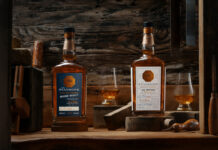A superior yet approachable whisky offer can be a hit in 2019

WITH over 120 active whisky distilleries in Scotland alone, the category, whilst holding a special place in the hearts of connoisseurs, can prove as misty as a winter morning in the Highlands for those yet to delve into the broad vista of uisge beatha.
And as whisky from home and abroad offers a plethora of different styles, expressions and tasting notes, operators who bring premium variants into their venues and present them in an accessible way can cash in on the distillate in the new year, firms told SLTN.
Joseph Walsh, commercial director at Distell, whose portfolio includes single malt brands Bunnahabhain and Deanston, stated the tradition of grouping Scotch whiskies into regions and world whiskies into countries in bars should be changed instead to focus on flavour.
He said: “I firmly believe that bars should design their range around taste structure and not by region.
“The non-whisky drinker experimenting in the category needs guidance on taste and will not necessarily have the knowledge to understand regional-specific tastes.
“This can also be subject to misinterpretation, for instance Bunnahabhain is in the main unpeated, but is commonly thought of as peated due to its Islay heritage.”
Faith Holland, head of category development at Diageo, reinforced that idea.
She said: “A good way to simplify the whisky category and to help people choose what’s right for them is to break your selection into different flavour-led sub-categories: spicy, fruity, smoky and sweet.”
Although licensees are likely to be busy over the festive season, drinks firms said it’s worthwhile giving some thought to how the growing demand for premium whiskies can attract customers during the quieter months.
One way to successfully cater to this demand is by introducing “break-even” bottles, said Walsh of Distell.
“These allow bars to offer a premium or limited edition malt at a break-even cost,” he said.
“Consumers are becoming savvier and want value for money.
“This is one initiative which gives the consumer the chance to purchase something a little different for a reasonable price.
“Invariably they continue to purchase other products on their visit, or indeed revisit on future occasions.”
Another method to combine both quality and value is providing a range of non-age statement single malts within whisky ranges, reckons Walsh.
He said: “The real whisky boom is being driven by malts as customers continue to premiumise.
“Single malt growth continues across the globe and we have particularly seen this with non-age statement malts.
“These malts should still be a true representation of the distillery’s character and offer an affordable and versatile entry point for newcomers to malt whisky.”
No matter what level of knowledge whisky drinkers possess, it is important those pouring the spirit in bars know their way around the category, said Sam Kershaw, brand ambassador for Wild Turkey bourbon.
He said: “Make sure your team is well-versed in guiding your customers to the right selection and you will not only create a better experience for them but also reap the rewards in terms of return.
“There is definitely a trend towards better quality spirits as consumer tastes evolve and the key to having a range of whiskies on your menu is making sure your team is well-trained to take people through the options.”
Nick Gillett, managing director of Mangrove, distributor of Highland malt The GlenDronach, agreed.
He said: “Make sure bar staff share product knowledge about the history, provenance and flavour of your whiskies with customers and introduce them to new whiskies – it makes for a great customer experience.”




















